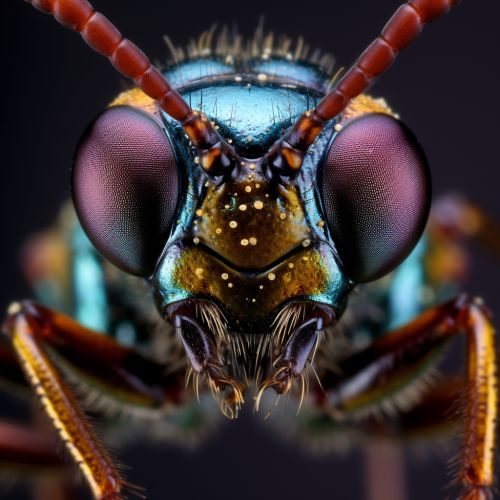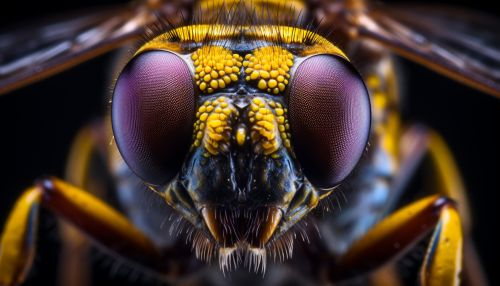Insect Morphology
Introduction
Insect morphology is the study and description of the physical form and external structure of insects. This field is central to taxonomy, the science of naming and classifying organisms, as morphological characteristics often serve as the basis for distinguishing between different species and genera.


Body Structure
The body of an insect is divided into three main parts: the head, the thorax, and the abdomen. Each of these parts plays a crucial role in the insect's survival and reproduction.
Head
The insect's head houses the brain and contains several sensory organs. The most prominent of these are the compound eyes, which provide the insect with a wide field of vision. The head also contains the mouthparts, which vary greatly in structure and function depending on the insect's diet.
Thorax
The thorax is the center of locomotion for the insect, containing the muscles that control the wings and legs. The thorax is divided into three segments: the prothorax, the mesothorax, and the metathorax. Each of these segments bears a pair of legs, while the latter two also support a pair of wings in most insect species.
Abdomen
The abdomen houses the insect's digestive, excretory, and reproductive systems. It is typically the largest part of the insect's body and is divided into several segments, the number of which varies between different insect orders.
Sensory Systems
Insects possess a variety of sensory systems that allow them to interact with their environment. These include visual, auditory, olfactory, and tactile senses.
Visual System
Insects primarily rely on their compound eyes for vision. These eyes are composed of many individual lenses, each of which captures a small portion of the insect's field of view. This allows the insect to detect movement and changes in light intensity very effectively.
Auditory System
While not all insects possess the ability to hear, those that do typically have auditory organs known as tympanal organs. These structures are capable of detecting vibrations in the air or substrate, allowing the insect to respond to sounds in its environment.
Olfactory System
Insects have a highly developed sense of smell, which they use to locate food, mates, and suitable sites for oviposition. This sense is mediated by antennae, which are covered in a variety of sensory receptors that can detect different types of chemical signals.
Tactile System
Insects also possess a sense of touch, primarily mediated by mechanoreceptors located throughout their body. These receptors allow the insect to detect changes in pressure, temperature, and humidity, as well as to sense physical contact with other objects or organisms.
Reproductive System
Insect reproduction is typically sexual, with males and females of the same species mating to produce offspring. However, some insects are also capable of asexual reproduction, in which a female can produce offspring without mating.
Sexual Reproduction
In sexual reproduction, the male insect transfers sperm to the female during mating. The female then uses this sperm to fertilize her eggs, which she typically lays in a suitable environment for the larvae to develop.
Asexual Reproduction
In asexual reproduction, the female produces eggs that develop into offspring without being fertilized by male sperm. This type of reproduction is less common in insects, but it does occur in some species, such as aphids and some types of wasps.
